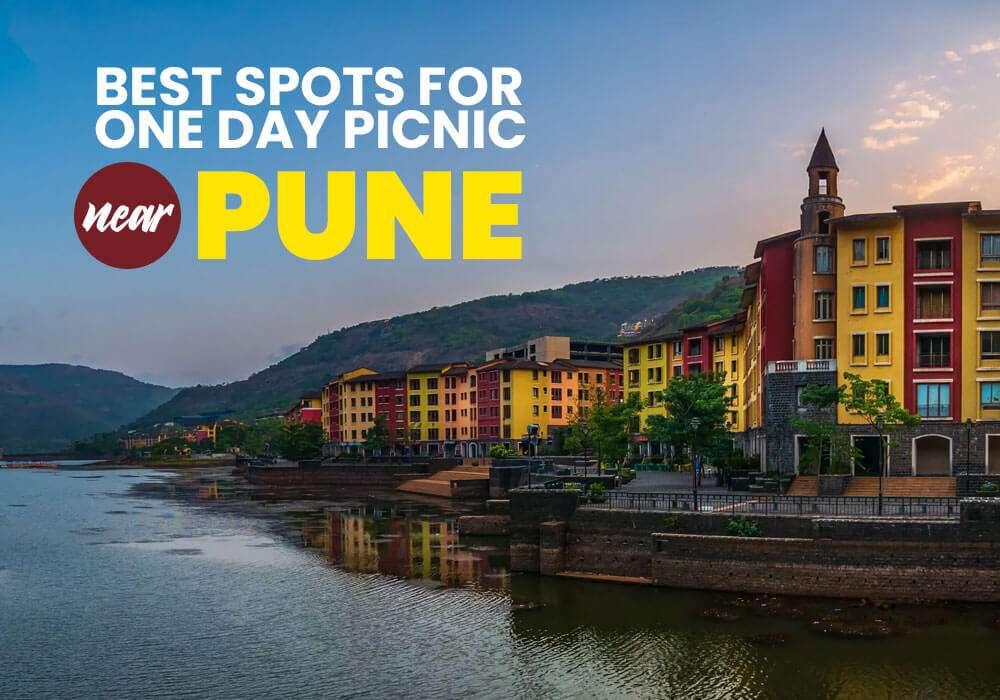
Last Updated At: 28-May-2025
11 Interesting Facts About Poland : Must Know In 2025
Beyond its famous pierogi and stunning medieval cities, Poland hides a treasure trove of intriguing facts and unique aspects, making it a captivating destination for travellers and a fascinating subject for exploration. From its resilient spirit that has weathered centuries of adversity to its unique Polish traditions and even a uniquely named town, Poland offers a wealth of interesting facts that shed light on its dynamic and multifaceted character. In this blog post, we embark on a captivating journey into the heart of Poland, unveiling a trove of interesting and often surprising facts that paint a vivid portrait of this remarkable nation.
11 Amazing Facts About Poland That You Never Knew
This article will help you to know the fascinating facts you never know. So, let’s dive right into it to unveil Poland's historical wonders.
- Birthplace of Vodka
- World’s First Upside-down House
- Warsaw: A City Reborn After World War II
- Polish People Marry at Early Age
- Seven Wonders of Poland
- The Best Hangout Place for Sports Lovers
- Poland Famous for These Inventions
- A Culinary Palette
- Mushroom Foraging is Considered a Crucial Activity for Polish People
- World's Largest Castle - Poland’s Hidden Gems
- Poland is a Home to 100 Bird Sanctuaries
1. Birthplace of Vodka
Vodka, often hailed as one of the world's most iconic spirits, traces its origins to Eastern Europe, with Russia and Poland frequently vying for the title of its birthplace. Poland asserts its historical ties to vodka production, dating back to the early Middle Ages. Polish vodka, known as "wódka" in Polish, has a rich heritage and is considered an integral part of Polish culture. It's undeniable that Poland has made significant contributions to its history and development, with vodka becoming a globally beloved libation.
2. World's First Upside-down House
Poland is known for its rich history and cultural landmarks, but it also boasts an intriguing claim to fame – the world's first upside-down house. This whimsical architectural marvel, located in the picturesque village of Szymbark, offers a mind-bending experience for visitors. Everything within it, from the furniture to the chandeliers, adheres to the same topsy-turvy design, defying gravity and challenging our perception of reality. Poland's upside-down house is a testament to the nation's capacity to blend art, architecture, and amusement in a captivating and entertaining way.
Read More : Best Tourist Places To Visit In Poland
3. Warsaw: A City Reborn After World War II
Ravaged during World War II, Warsaw city faced near-total destruction, with approximately 85% of its infrastructure reduced to rubble. The post-war years saw a determined effort to resurrect Warsaw from its ashes. Painstakingly, architects and citizens alike worked to rebuild, often using old paintings and photographs as guides to restore the city’s iconic buildings like the Royal Castle and Wilanów Palace. Today, Warsaw is a bustling metropolis, seamlessly blending its painstakingly restored historical sites with modern architecture and amenities. The city has also regained its status as a cultural, economic, and political hub, attracting tourists and investors alike.
4. Polish People Marry at Early Age
Polish culture places a significant emphasis on family values and traditional ideals, which is reflected in the fact that Polish people tend to marry at a relatively young age compared to the rest of Europe. On average, Poles tie the knot in their early to mid-20s, making Poland one of the countries with the youngest age of first marriage on the continent. It underscores the enduring importance of family bonds and unique Polish traditions within society.
5. Seven Wonders of Poland
Poland boasts a rich tapestry of cultural and natural treasures, and its "Seven Wonders of Poland" showcase this nation's remarkable diversity.
Here is the list of seven wonders you should visit in Poland:
- The historic Wieliczka Salt Mine
- Krakow Market Square & Old Town
- Torun Old Town
- Zamosc Old Town
- Malbork Castle
- Elblag Canal
- Wawel Castle & Cathedral
Read More : Places For Shopping In Poland
6. The Best Hangout Place for Sports Lovers
Poland boasts a vibrant sports culture with several intriguing and popular disciplines. Football reigns supreme, with passionate fans supporting their local teams in stadiums like Warsaw's PGE Narodowy. Volleyball holds a special place in Polish hearts, and the national team's success in international competitions, including Olympic medals, has elevated its status. Speedway racing, characterised by high-speed bikes on oval tracks, enjoys a dedicated following, and Poland's riders are among the best globally. Ski jumping also garners attention, with Zakopane's Wielka Krokiew Hill hosting World Cup events. These diverse sports reflect Poland's passion for athleticism and competition.
7. Poland Famous for These Inventions
Poland has made significant contributions to the world of innovation, with numerous famous inventions tracing their roots to this European nation. Among these pioneering creations is the modern kerosene lamp, invented by Ignacy Lukasiewicz in the 19th century, which revolutionized indoor lighting. Another remarkable Polish invention is the bulletproof vest, devised by Kazimierz Zeglen, providing crucial protection for law enforcement and military personnel. In the realm of mathematics, the Banach-Tarski Paradox, formulated by Polish mathematician Stefan Banach, challenges our understanding of geometry. Moreover, Poland's role in the development of the Rubik's Cube, designed by Erno Rubik, adds a playful twist to its inventive legacy. These inventions underscore Poland's enduring impact on global innovation.
8. A Culinary Palette
Polish cuisine is hearty and rich, featuring a variety of meats, potatoes, and cabbages. The country is famous for dishes like pierogi (filled dumplings), bigos (hunter’s stew), and kielbasa (sausage). So, when exploring surprising Polish cuisine, be ready for a delightful journey filled with unexpected culinary delights.
Read More : Food Of Poland
9. Mushroom Foraging is Considered a Crucial Activity for Polish People
Mushroom foraging is a cherished and widespread activity in Poland, deeply rooted in its culture and traditions. Locally known as "grzybobranie," it's a popular pastime transcending generations. During autumn, forests and woodlands become treasure troves for mushroom enthusiasts who seek the elusive fungi. Poland's diverse landscapes provide an abundance of mushroom varieties, from prized porcini and chanterelles to lesser-known species. Families often embark on woodland excursions, armed with baskets and knowledge passed down through the ages, fostering a strong connection to nature. However, this pursuit requires expertise, as some mushrooms can be toxic, highlighting the importance of proper identification skills. Mushroom foraging connects Poles with their environment and fills their kitchens with the flavours of the forest.
10. World's Largest Castle - Poland’s Hidden Gems
Poland proudly boasts the distinction of being home to the world's largest castle, the awe-inspiring Malbork Castle. Located in Malbork, this colossal medieval fortress was constructed by the Teutonic Knights in the 13th century. Its sheer scale is staggering, comprising three grand castles enclosed within massive defensive walls spanning over 21 acres. Today, it serves as a museum, offering visitors a captivating journey through history, showcasing the castle's military significance and cultural and artistic heritage.
Read More : Places To Visit In Poland In February
11. Poland is a Home of 100 Bird Sanctuaries
Poland boasts a remarkable commitment to avian conservation, with over a hundred bird sanctuaries scattered across its diverse landscapes. The Biebrza Marshes, a UNESCO Biosphere Reserve, attract countless waterfowl, while the Bialowieza Forest shelters rare woodpeckers and owls. The stunning Bieszczady Mountains provide refuge for golden eagles and black grouse. Ornithologists and nature enthusiasts flock to these sanctuaries to observe and study the rich birdlife, making Poland a premier destination for birdwatching.
Whether it’s the scientific contributions, the mesmerising landscapes, or intriguing Polish history, Poland stands as a testament to human resilience, ingenuity, and diversity. As the Polish proverb says, "Not my circus, not my monkeys," but after diving into the fascinating world of Poland, you might find it a circus well worth joining.
With Adotrip, you can take your travel experience to new heights. Not only does Adotrip provide thorough travel supplies, but they also offer expertly chosen itineraries that cater to every type of traveler. Whether you're an adventure enthusiast looking for adrenaline-pumping activities in Poland or a culture vulture seeking to immerse yourself in Poland's local traditions and customs, Adotrip has got you covered.
With us, nothing is far!
Frequently Asked Questions About Interesting Facts About Poland
Q1. What are some famous Polish inventions?
A1. Some famous Polish inventions include the modern kerosene lamp by Ignacy Łukasiewicz, the bulletproof vest by Jan Szczepanik, and the early version of the Walkman by Andrzej Kędziora.
Q2. What is the significance of the Polish national symbol, the White Eagle?
A2. The White Eagle is the national symbol of Poland, representing independence, strength, and resilience. It has been a symbol of Polish identity for centuries, symbolising the nation's enduring spirit and commitment to sovereignty.
Q3. What is the historical background of Poland's famous salt mines?
A3. Poland's famous salt mines have a history dating back to the Neolithic period. The first salt mines in Poland were located in Wieliczka and Bochnia, and excavated in the 13th century. The mines played a major role in Poland's economy from the 14th to the 18th century, and their grandeur and architecture were already attracting foreign visitors by the end of the 1400s.
Q4. How did Poland's Solidarity movement contribute to the downfall of communism?
A4. Poland's Solidarity movement was a nonviolent trade union that challenged the communist government's authority. It showed that the communist system was not invincible and that ordinary people could stand up for their rights. Solidarity's example inspired other movements in other communist countries, and it helped to bring about the downfall of communism in Eastern Europe.
Q5. Which Polish city is known as the "Venice of the North" and why?
A5. Warclaw is known as the "Venice of the North" due to its picturesque canals, historic architecture, and maritime heritage, reminiscent of Venice. The city's waterways and rich history make it a popular European destination.
--- Published By Adotrip
Latest Blogs

Cash in the Wild: My Safari Adventure Across Kenya with Only...

One Day Picnic Spot Near Pune - Adventure, Trekking and Natu...

One Day Picnic Spots Near Mumbai - Monsoon, Adventure, Beach...

The Best Places to Go in Thailand in 2025









.jpg)
.jpg)

 Dubai
Dubai Malaysia
Malaysia USA
USA





